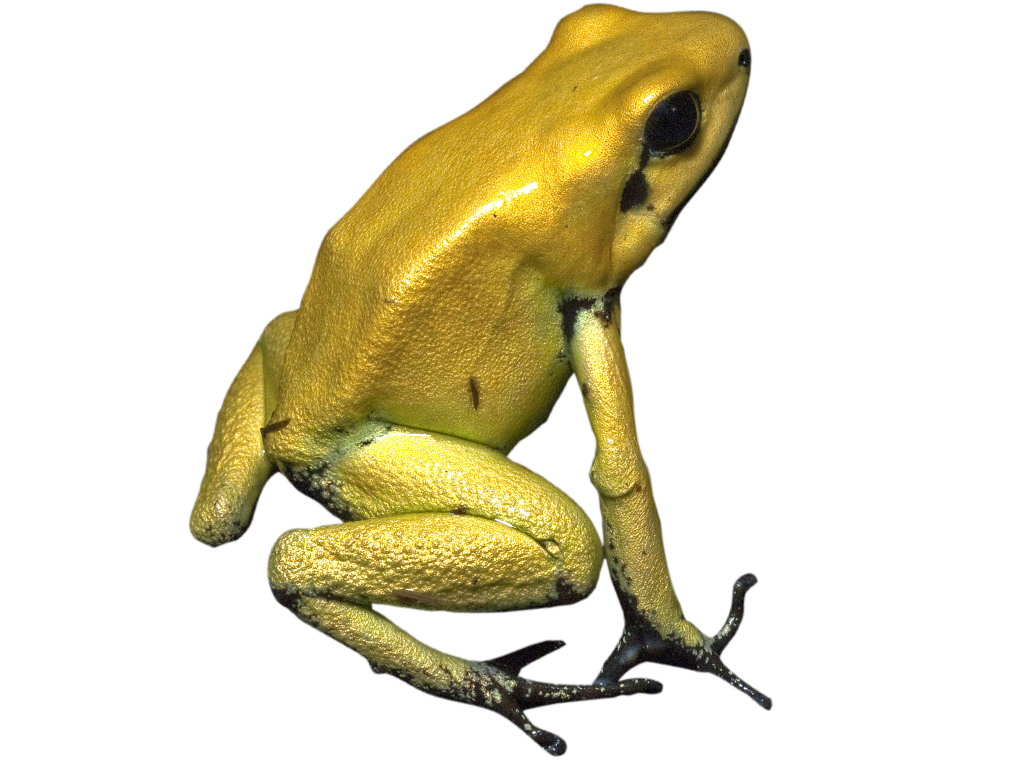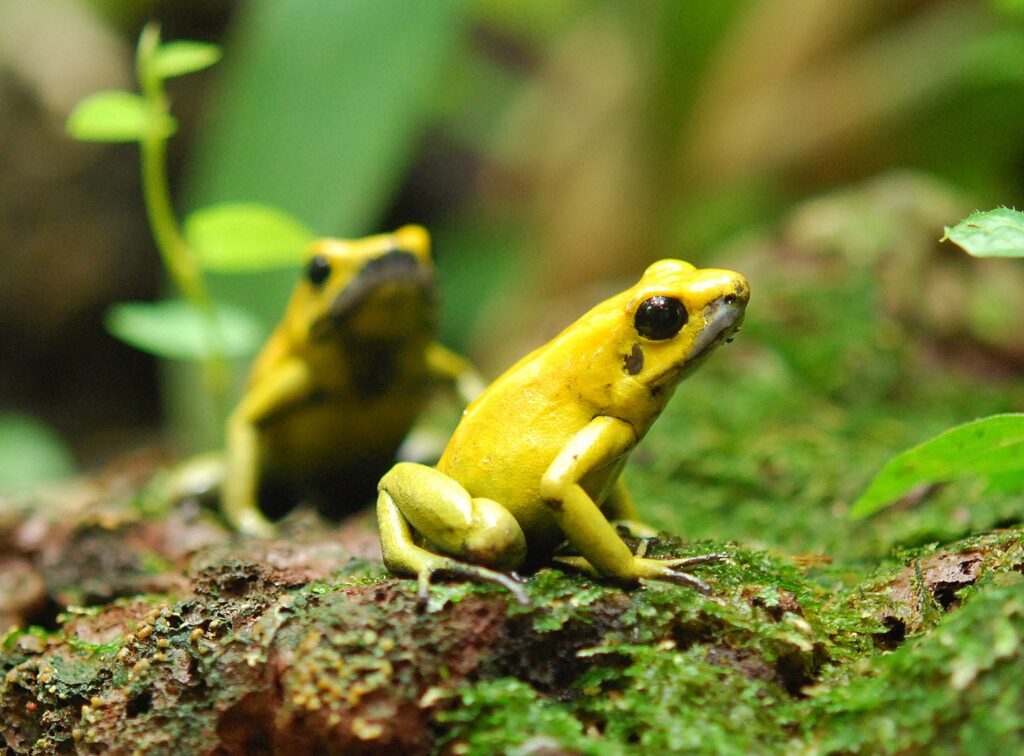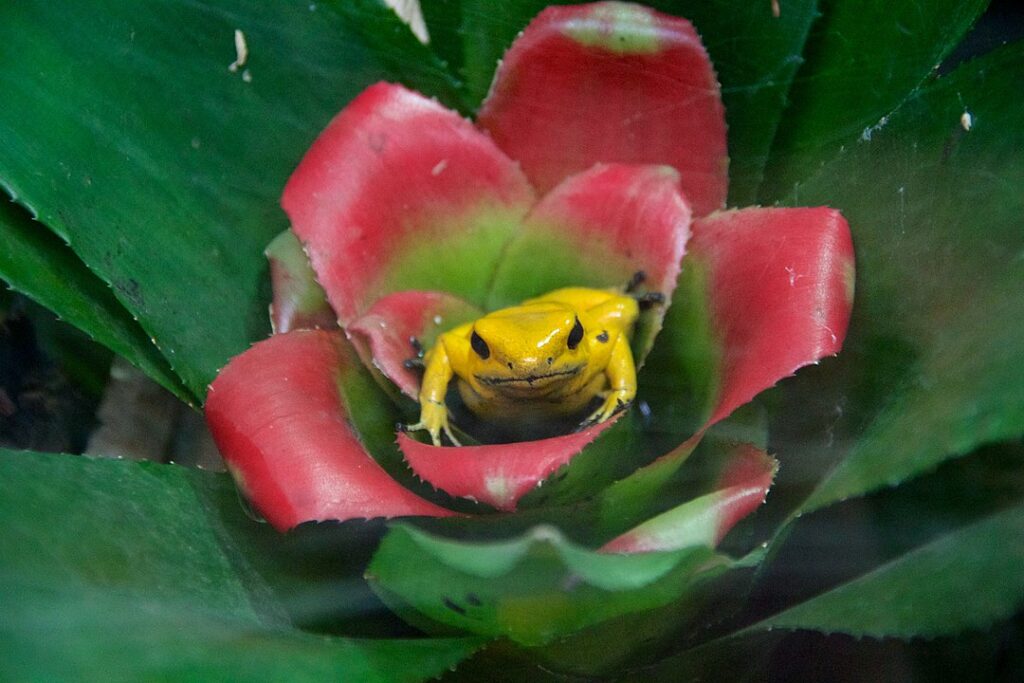Golden poison frog
Phyllobates terribilis

The world’s most poisonous vertebrate
The golden poison frog lives in a very small area of the Colombian rainforest. It is entirely dependent on heavy rainfall and high humidity. The golden poison frog is considered to be the most poisonous vertebrate in the world! The poison is secreted from glands in the frog’s skin. In the case of other poisonous frogs, you almost have to eat the whole frog for the poison to be dangerous to a human. But the golden poison frog is so poisonous that even touching it can be dangerous. A single frog can contain enough poison to kill 20 people!

Photo: Micha L. Rieser
They don’t produce the poison themselves
The golden poison frog belongs to a group of frogs called poison dart frogs. A captive-bred golden poison frog is not poisonous at all! That’s because the frog doesn’t make its own poison, but collects it from the insects it eats. Scientists are not yet sure which of the insects are responsible for the creation of this poison, but various ants, termites and beetles are likely candidates. Captive-bred poison dart frogs eat ordinary fruit flies, and are therefore harmless to humans.
The group called poison dart frogs takes its name from the fact that some indigenous tribes in the rainforest use the frogs’ poison to dip their arrowheads in, and then use the arrows for hunting. Far from all poison dart frogs are poisonous, and only four species have been confirmed to be used for arrowheads. The golden poison frog is one of them. An arrowhead dipped in the poison of the golden poison frog is lethal for up to two years.

Photo: Ellika-Nordström-Malmö-Museer
The parents carry the tadpoles in mucus on their backs
The male and female of the golden poison frog have a mating ritual where they stroke and touch each other before fertilising the eggs. The female lays the eggs on the ground underneath leaves. When the eggs hatch, the tiny tadpoles crawl up the backs of their parents, where they cling to a layer of mucus. The parents then carry their young up into the trees, to find plants with small pools of water in them. There the young are left to develop into adult frogs.

Photo: Mike-Peel-CC-BY-SA
Distribution worldwide
Colombia.
White marking = Distribution

Threat based on the Red List

Trade regulations
CITES: B-listed.